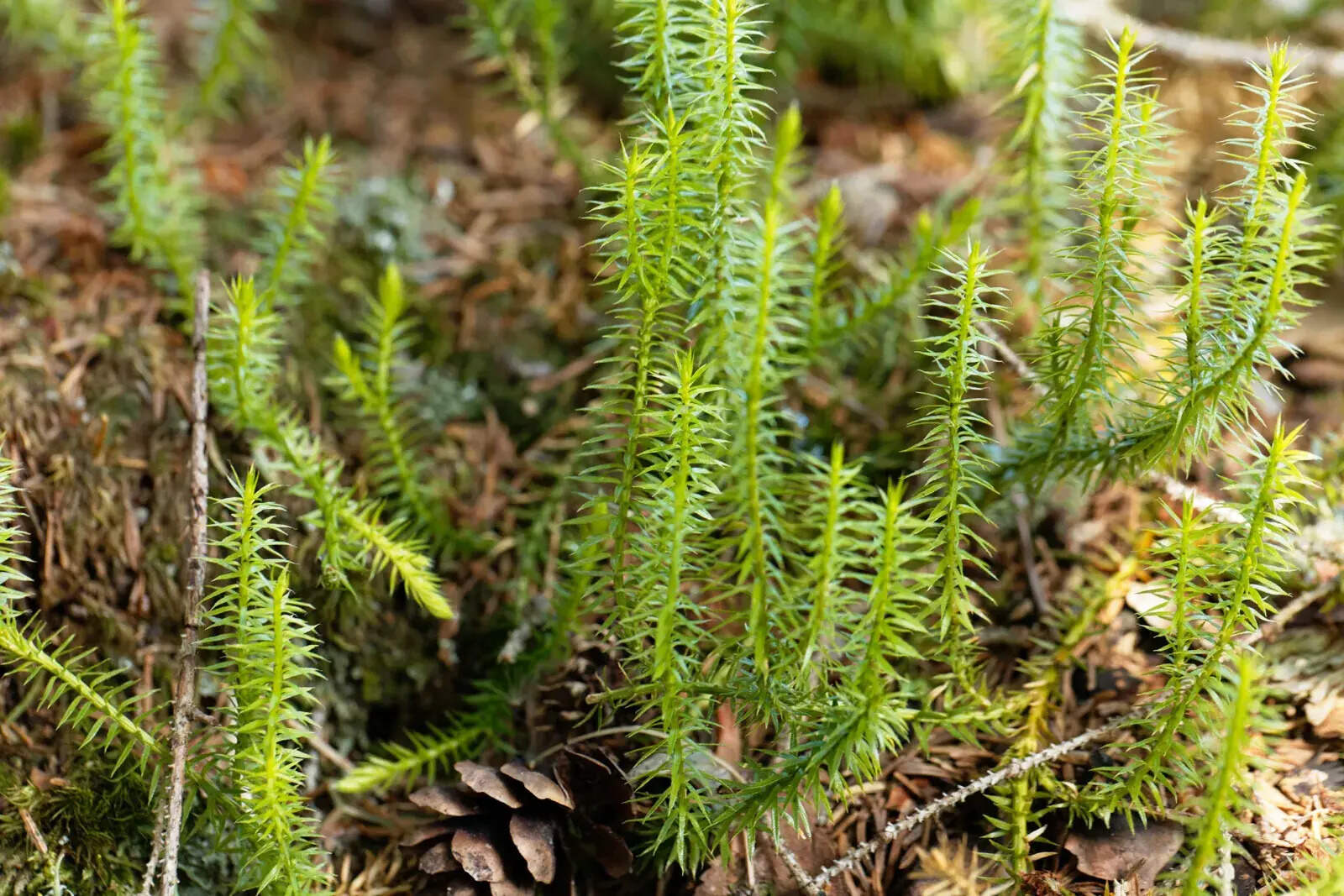
What is Clubmoss? Clubmoss, also known as Lycopodiopsida, is a fascinating group of plants that have been around for millions of years. These ancient plants resemble mosses but are more closely related to ferns. They thrive in various environments, from tropical rainforests to temperate woodlands. Unlike true mosses, clubmosses have vascular tissues, which help transport water and nutrients throughout the plant. This unique feature allows them to grow larger and survive in diverse habitats. Clubmosses reproduce through spores, not seeds, making their life cycle quite intriguing. Some species are even used in traditional medicine and have historical significance. Dive into these 26 facts about clubmoss to learn more about their characteristics, uses, and ecological importance.
What is Clubmoss?
Clubmoss, also known as Lycopodiophyta, is a fascinating group of ancient plants. These small, evergreen plants resemble mosses but are more closely related to ferns. Let's dive into some intriguing facts about these unique plants.
-
Ancient Origins: Clubmosses have been around for over 400 million years, dating back to the Devonian period.
-
Not True Mosses: Despite their name, clubmosses are not true mosses. They belong to a different plant division called Lycopodiophyta.
-
Evergreen Nature: These plants are evergreen, meaning they retain their green color throughout the year.
-
Spore Producers: Clubmosses reproduce via spores, not seeds, similar to ferns.
-
Tiny Cones: The spores are produced in small, cone-like structures called strobili.
Unique Characteristics of Clubmoss
Clubmosses possess several unique characteristics that set them apart from other plants. Here are some of the most notable ones.
-
Creeping Stems: Many clubmosses have creeping stems that spread across the ground, forming dense mats.
-
Scale-like Leaves: Their leaves are small and scale-like, often giving the plant a feathery appearance.
-
Microphylls: The leaves of clubmosses, known as microphylls, have a single, unbranched vein.
-
Rhizomes: Clubmosses often have underground stems called rhizomes, which help them spread and colonize new areas.
-
Resilient Plants: These plants are incredibly resilient and can survive in various environments, from forests to rocky outcrops.
Ecological Importance of Clubmoss
Clubmosses play a significant role in their ecosystems. They contribute to soil health and provide habitat for various organisms.
-
Soil Stabilizers: Their dense mats help stabilize soil and prevent erosion.
-
Moisture Retention: Clubmosses help retain moisture in the soil, benefiting other plants in the area.
-
Habitat Providers: These plants provide habitat and shelter for small insects and other organisms.
-
Indicator Species: Clubmosses can be indicators of healthy, undisturbed ecosystems.
-
Carbon Sequestration: Like other plants, clubmosses absorb carbon dioxide, helping to mitigate climate change.
Uses of Clubmoss
Throughout history, clubmosses have been used for various purposes, from traditional medicine to modern applications.
-
Traditional Medicine: Indigenous peoples have used clubmosses for their medicinal properties, treating ailments like digestive issues and skin conditions.
-
Flash Powder: The spores of some clubmosses were once used in early photography as flash powder due to their flammability.
-
Decorative Uses: Clubmosses are sometimes used in floral arrangements and as ground cover in gardens.
-
Crafts: Some cultures use dried clubmosses in crafts and decorations.
-
Research: Scientists study clubmosses to understand plant evolution and development.
Conservation of Clubmoss
Conserving clubmosses is crucial due to their ecological importance and ancient lineage. Here are some facts about their conservation status.
-
Threatened Species: Some clubmoss species are threatened due to habitat loss and environmental changes.
-
Protected Areas: Many clubmoss habitats are protected in national parks and reserves.
-
Conservation Efforts: Efforts are underway to conserve clubmosses through habitat restoration and protection.
-
Public Awareness: Raising public awareness about the importance of clubmosses can help in their conservation.
-
Research and Monitoring: Ongoing research and monitoring are essential to understand the needs and threats to clubmoss populations.
-
Climate Change Impact: Climate change poses a significant threat to clubmosses, affecting their habitats and growth patterns.
Clubmoss: Nature's Tiny Marvel
Clubmoss, often overlooked, packs a punch in the plant world. These ancient plants, dating back millions of years, have unique characteristics that set them apart. They thrive in various environments, from forests to wetlands, showcasing their adaptability. Their spores, once used in early photography and fireworks, highlight their historical significance. Despite their small size, clubmosses play a crucial role in ecosystems, providing habitat and food for various species.
Understanding clubmoss helps us appreciate the intricate web of life. Their resilience and versatility remind us of nature's wonders. Next time you spot a patch of clubmoss, take a moment to marvel at its history and importance. These tiny plants are more than just ground cover; they're a testament to nature's enduring beauty and complexity. Keep exploring and appreciating the small wonders around us.
Was this page helpful?
Our commitment to delivering trustworthy and engaging content is at the heart of what we do. Each fact on our site is contributed by real users like you, bringing a wealth of diverse insights and information. To ensure the highest standards of accuracy and reliability, our dedicated editors meticulously review each submission. This process guarantees that the facts we share are not only fascinating but also credible. Trust in our commitment to quality and authenticity as you explore and learn with us.
